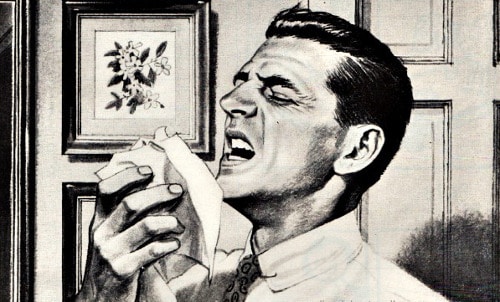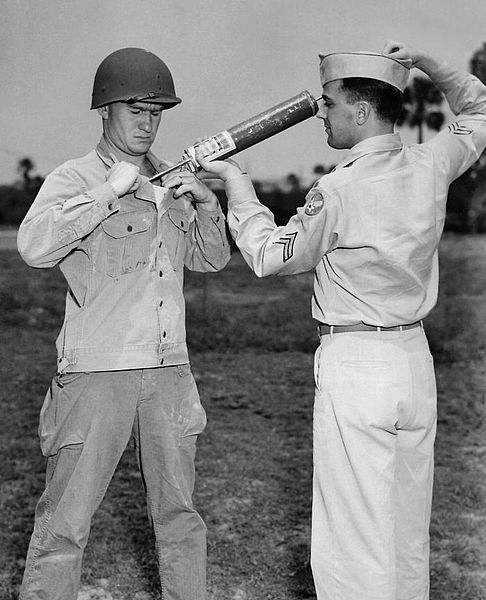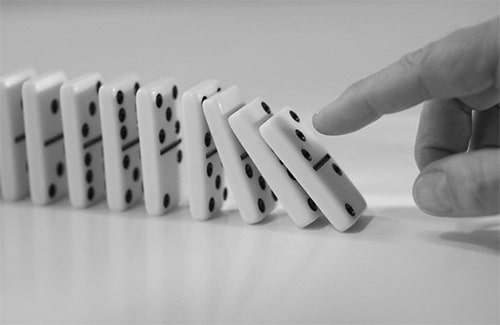
Welcome back to our series on what weakens our integrity and how to strengthen it. Thus far we have discussed how we decide to commit a dishonest act, and how the distance between that act and its consequences can increase our ability to rationalize immorality as acceptable behavior.
Today we are going to discuss another important factor that influences our comfort level with dishonest decisions: seeing other people make them.
Dishonesty as a Social Contagion
As psychology professor Dan Ariely explored the nature and motivations for dishonesty, he found himself wondering whether it might spread from person to person like a social contagion – an “immorality virus.” If people saw someone from their same social group cheating, would it make them more likely to cheat too?
To find the answer to this question, Ariely once more returned to the matrix test that we have referenced in previous posts; in a classroom-like setting, college students are given 20 mathematical matrices to solve in 5 minutes and are paid for each correct answer they get. For this particular test, each member of the control group received an envelope of cash along with a worksheet. When a participant finished, he checked his answers and withdrew the appropriate amount of cash from the envelope. Then he brought his worksheet up to the experimenter who reviewed the answers and how much change was left in the envelope before sending the participant on his way.
In the shredder condition, which allowed for cheating, a participant checked his own answers, withdrew cash from the envelope, shredded his worksheet, placed the envelope with whatever change remained in a box, and left the room – all without interacting with the experimenter, who had her head buried in a thick book.
Finally, some participants were put in what was called the “Madoff condition.” Everything was set up the same way as in the shredder version of the experiment, but a minute after the participants began working on the matrices, an actor and confederate of the experimenter, who was posing as just another participant, would stand up and say: “I’ve finished. What should I do now?” To the other participants, this guy was clearly a cheater — there was no way someone could solve all 20 matrices in just 60 seconds. The experimenter would respond to the “cheater” by telling him to go ahead and shred his worksheet. Then, the Madoff-in-training would say to the experimenter, again, loud enough so everyone could hear, “I solved everything, so my envelope for the extra money is empty. What should I do with it?” To this the experimenter would reply, “Put the empty envelope in the box, and you are free to go.” With that the actor would leave with a satisfied smile and a wave.
So, did the participants in the Madoff condition, seeing that it was possible to take all the money home without effort or consequence, feel inspired to cheat more? Or were they upset to see someone being so dishonest, and cheat less?
They cheated more. Much more, as it turns out. Participants in the Madoff condition, on average, claimed to have solved 3 more matrices than in the straight shredder condition, and 8 more than the control group. “In short,” Ariely writes, “those in the Madoff condition paid themselves for roughly double the number of answers they actually got right.”
What was at the root of such a substantial uptick in cheating? Was it that the other participants were now simply more clued in to the fact that they could cheat and get away with it? Ariely ran a follow-up experiment to test that theory. In this “question condition,” the confederate to the experimenter asked aloud, “Given these instructions, can’t I just say I solved everything and walk away with all the cash? Is this okay?” The experimenter would respond, “You can do whatever you want.” But the actor did not get up and leave early as in the previous condition. In short, the participants received confirmation that they could cheat without consequences, but they didn’t see an example of someone actually doing it. The result? Participants in the question condition claimed to solve 5 fewer matrices than the Madoff group.
So the increase in cheating wasn’t due to the participants simply making a rational cost-benefit analysis of risk vs. reward. Instead, what Ariely had uncovered was the insidious social component of dishonesty and the way it can indeed spread like an infection. “In many areas of life, we look to others to learn what behaviors are appropriate and inappropriate,” Ariely theorizes. “Dishonesty may very well be one of the cases where the social norms that define acceptable behavior are not very clear, and the behavior of others…can shape our ideas about what’s right and wrong.” In other words, witnessing someone from our social group being dishonest can potentially “recalibrate our internal moral compass.”
How to Inoculate Yourself Against the Immorality Virus

Choose your friends and associates wisely. Every man likes to fancy himself as a completely independent, lone wolf who is immune to peer pressure. Such autonomy may be a worthy ideal, but research on the subject has shown that – to one degree or another — we are all influenced by those with whom we are surrounded. Studies have already demonstrated that our associates and loved ones affect our weight and mood. And now we know they can play a role in shifting the needle of our moral compass as well.
It is most definitely possible to spend your time with those who have far lower moral standards than you and still maintain your own. It’s just more difficult. Swimming upstream gets tiresome, and you run the risk of eventually being worn down and coming to accept the lower standards as your new normal. When you surround yourself with friends who share your high moral standards, however, staying on the straight and narrow becomes much easier.
Become a member of an honor group. Ariely argues that the more you consider the person you see being dishonest to be a member of the same social group, the more they can influence your ideas of right and wrong. Somewhere in your subconscious you think, “They’re like me and they think doing that is okay, so maybe it’s okay for me to do that too.” We’re even more vulnerable to an example of bad behavior from an authority figure we respect, like a parent, coach, or pastor; these should-be mentors aren’t just like us, they’re people we aspire to become and look to as exemplars.
The really interesting thing, however, is that it also works the opposite way; seeing someone act immorally who we consider outside our social group can inspire us to be better.
In one of the most interesting versions of the study outlined above, instead of the actor/confederate being someone who seemed like all the other student participants, he wore a sweatshirt from the college’s rival school. In this so-called “outsider-Madoff” condition, the participants claimed to solve 6 fewer matrices than in the straight Madoff group. When we see someone act badly whom we consider to be from a different and morally inferior social group than our own, we are reminded that we don’t want to be like them and increase our good behavior in order to distance ourselves from identifying with them.
Honor groups are essentially premised on this principle; the group compares itself to other groups and considers itself to be better/stronger/more moral than any other. The group competes to maintain this reputation and members police each other to uphold standards that will buttress their claim to pride. This kind of “us vs. them” mentality isn’t very popular these days, but I believe it can counter-intuitively be quite healthy in bringing out the best in us.
Know and be firm in your honor code. While we all may be influenced by our friends to varying degrees, the firmer and clearer we are as to our principles and standards, the less swayed we will be by the actions and examples of others. Is your personal honor code vague and squishy, or is it set in a firm foundation and as clear as the noon-day sun? Have you taken the time to reflect on your principles? Do you know how and why you arrived at embracing them or are they unexamined beliefs you have absorbed from your upbringing and culture?
Whether you are amongst members of your honor group or far afield with those who do not share your values, your personal honor code will act as a constant source of direction so that you act as the same man wherever you go and with whomever you meet.
Even if you have a clear personal honor code, it will be useless in keeping you morally on track unless you purposefully and regularly remind yourself of it. Much more on this in our last post in the series.
Stopping the Spread of the Contagion in Society

Integrity is not simply a personal virtue, but a social one as well. In fact, there may be no other virtue in which an individual’s personal cultivation of it has such a large effect on society as a whole. The social contagion theory explains why. When one individual decides to act in an unethical way, his example can influence someone else to do likewise, resulting in a domino effect that lowers the standards of an ever-widening group of people. Or as Ariely puts it:
“Passed from person to person, dishonesty has a slow, creeping, socially erosive effect. As the ‘virus’ mutates and spreads from one person to another, a new, less ethical code of conduct develops. And although it is subtle and gradual, the final outcome can be disastrous. This is the real cost of even minor instances of cheating and the reason we need to more vigilant in our efforts to curb even small infractions.”
The virus of dishonesty is no abstract idea. Think of the corruption that seems to run rampant in our government and economy. It surely started with a few individuals who were willing to let things slide. Those around them saw that this was the new norm and began to adopt the same standards. When new guys came in, they adopted what had by then become the standard culture of the enterprise. Even the “doctors” who promise to come in and clean things up end up infected by the same disease they were supposed to cure.
It doesn’t have to be on such a grand scale either. Consider the high schooler who illegally downloads music. He may have thought he had a strong moral stance on the issue, but then sees his friends doing it, and not getting caught. He may say to himself that it’ll just be one song or one album…but then his entire library is illegally downloaded. His little brother grows up thinking that that’s how you get new music, and he influences his friends to pirate stuff too, and on the behavior spreads.
Ariely further argues that the cheating and dishonesty of public figures has an outsized effect on the overall integrity level of society, as their odious examples get broadcasted to so many people. This is why it’s hard to say whether our time period is more corrupt than previous ones, or whether the insatiable 24/7 media simply brings more attention to the kind of corruption that has always existed…since that very attention can actually be driving even more corruption! We are perhaps caught in a very destructive cycle.
What then can we do to throw a wrench in this cycle?
Publicize and champion stories of people who are doing the right thing. Ariely argues that giving good examples more attention is effective because morality is contagious in the very same way that dishonesty is: “With more salient and vivid examples of commendable behavior, we might be able to improve what society views as acceptable and unacceptable behaviors, and ultimately improve our actions.” Think of those somewhat cheesy insurance commercials where one person sees another do a good deed, which inspires someone else to do something good, and thus sets off a long chain of positive behaviors in a veritable re-telling of Pay It Forward. Doing good isn’t the kind of thing that makes it to the front page of the HuffPo, but in the days of social media, everyone can do their part and play a role in sharing small, often local stories that might otherwise go unnoticed about folks who embody integrity. Take a look at your habits, and challenge yourself to 30 days of sharing, emailing, etc. only positive stories versus the ones that most often capture our attention.

Big brother Sheepdogs are watching you. Professors at the University of Newcastle decided to conduct an informal experiment inside of their faculty kitchen. The kitchen offered tea, coffee, and milk to faculty and staff and asked those who took a beverage to contribute a little money to an “honesty box” sitting on the counter. Above the box the researchers hung a picture; for five weeks it was one depicting a scene of flowers, and for five weeks it was emblazoned with a pair of eyes that seemed to be gazing upon the beverage drinkers. When the money deposited into the box was counted up, the researchers found that people had kicked in 3 times as much dough when the picture of eyes was hanging up than when the flowers were on display.
Ariely wanted to see if having actual eyeballs trained on someone would have the same honesty-inducing effect. So he once more returned to the shredder matrix test. This time the participants worked in pairs; while one partner worked on the matrices, the other would watch them, and then they would trade roles. Once both had finished, they would shred their worksheets together, write down their scores on the same piece of paper, add them up, and collect a payment based on their joint performance. They did this without speaking to each other at all. What was the cheating rate for this condition of the experiment? Zero. Nobody cheated when they knew someone else was watching them.
One can look at the result of such experiments and say that if it’s more monitoring we need, we should have more video/phone surveillance and regulators and inspectors. But such things only become necessary when a society has failed at the more effective and less onerous system: simply watching each other and calling out immoral behavior. We’ve developed an attitude of “see no evil, hear no evil” — that we shouldn’t care what other people are doing and should look the other way and mind our own business. Though it is a highly motivating driver of human behavior, we have become uncomfortable with shaming others for their wrongdoing.
We’ve adopted this mindset in the name of personal freedom. Yet the result has been the erection of more liberty-reducing external controls designed to check dishonesty in the absence of a culture of honor. Such rules and regulations may act as a last-defense line of safeguards, but they aren’t truly effective; when people know they aren’t being watched by others, and have no fear of being called out and punished for their actions, they will try to game and take advantage of the system to the greatest extent possible, circumventing the often impotent rules whenever they can. Those who don’t cheat (yet) see this and worry that if they don’t start fudging things too, they will be left behind. Soon, more and more people feel they must embrace a gray zone of morality to get ahead (and they may be right). Those who compromise their ethics wonder how far everyone else is pushing the envelope; Ariely found in his studies that when you are being dishonest, you’re more likely to think other people are too. Trust breaks down; cynicism and suspicion go up. Without the grease of trust, the wheels of society grind to a halt; nothing gets done. And society stops being a place that supports the full flourishing and happiness of its members.
Far better it would be if more individuals were simply willing to watch each other and to stand and speak up to break this depressing cycle. Far better it would be if we became a nation of sheepdogs whose vigilance deterred wrongdoing before it ever began.
Conclusion
There is a popular viewpoint these days that ridicules the idea that one individual’s personal decisions and behavior could possibly have an effect on the behavior of others. But what the scientific research on the subject tells us is that it is in fact ridiculous not to realize that each person’s actions have an ever-so-subtle ripple effect that influences others and the culture at large. We cannot see it with our eyes, or in real time, and of course no one is consciously aware of how these ripples are affecting them, just as no one in the matrix experiment consciously thought, “That guy cheated! He’s a lot like me. I guess it’s okay if I fudge things a little bit too.” No, it all happens at the level of the subconscious. This should surely give us pause and cause us to reflect on own behavior. What signals are you sending out each day? Are you a man whose example is making this world better…or worse?
Read the Series
Part I: Why Small Choices Count
Part II: Closing the Gap Between Our Actions and Their Consequences
Part IV: The Power of Moral Reminders
_________________
Source:
The Honest Truth About Dishonesty: How We Lie to Everyone–Especially Ourselves by Dan Ariely







